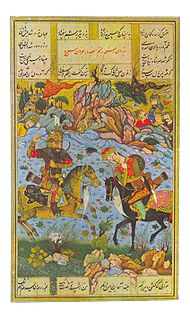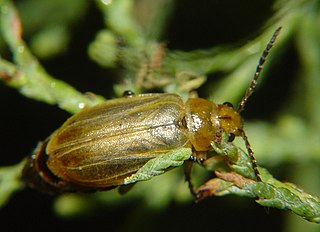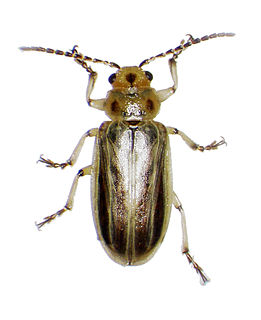
The genus Tamarix is composed of about 50–60 species of flowering plants in the family Tamaricaceae, native to drier areas of Eurasia and Africa. The generic name originated in Latin and may refer to the Tamaris River in Hispania Tarraconensis (Spain).

The Tamaricaceae are a flowering plant family containing four genera and a total of 78 known species. In the 1980s, the family was classified in the Violales under the Cronquist system; more modern classifications place them in the Caryophyllales.

Eshel HaNasi is a youth village in southern Israel. Located between Beersheba and Ofakim, it falls under the jurisdiction of Merhavim Regional Council. In 2019 it had a population of 356.

The Desert Classic is a professional golf tournament in southern California on the PGA Tour. Played in mid-winter in the Coachella Valley, it is part of the tour's early season "West Coast Swing."

Esfandiyār or Espandiyār is a legendary Iranian hero and one of the characters of Ferdowsi's Shahnameh. He was the son and the crown prince of the Kayanian King Goshtasp and Queen Katāyoun. He was the grandchild of Kay Lohrasp.

Gaz is an Iranian nougat that originated in Isfahan region. It is widely known as Persian Nougat in American and European countries. It is made from pistachio, almond kernels, rose-water, egg whites and sap from a special plant.

The tamarisk jird is a species of rodent in the family Muridae. It is found in China, Mongolia, Kazakhstan, Kyrgyzstan, Russia, Turkmenistan, and Uzbekistan. It prefers habitats with grass or shrub cover.
Roger J. Charlton is an English racehorse trainer and a former flat racing jockey. He trains horses in Beckhampton Stables, near Marlborough in Wiltshire, England. He made an immediate impact as a trainer in England and Europe, including victories in both The Derby and the Prix du Jockey Club in 1990. There has been continued success with the likes of Three Valleys, Tante Rose, Harmonic Way, Trade Fair, Tamarisk, Bated Breath, Avonbridge, Striking Ambition and then Al Kazeem had a series of major victories in 2013. After retiring him to stud, Time Test appeared on the scene in 2015.

Diorhabda carinulata is a species of leaf beetle known as the northern tamarisk beetle, which feeds on tamarisk trees from southern Russia and Iran to Mongolia and western China. This beetle is used in North America as a biological pest control agent against saltcedar or tamarisk, an invasive species in arid and semiarid ecosystems.

Tamarix gallica, the French tamarisk, is a deciduous, herbaceous, twiggy shrub or small tree reaching up to about 5 meters high.

Diorhabda elongata is a species of leaf beetle known as the Mediterranean tamarisk beetle (MTB) which feeds on tamarisk trees from Portugal and Algeria east to southern Russia. The MTB is used in North America as a biological pest control agent against saltcedar or tamarisk, an invasive species in arid and semi-arid ecosystems.

Diorhabda carinata is a species of leaf beetle known as the larger tamarisk beetle which feeds on tamarisk trees from Ukraine, eastern Turkey and Syria east to northwest China, Kyrgyzstan and Pakistan, extending as far south as southern Iran. It is used in North America as a biological pest control agent against saltcedar or tamarisk, an invasive species in arid and semi-arid ecosystems.

Diorhabda sublineata is a leaf beetle known as the subtropical tamarisk beetle (STB). The species was first described by Hippolyte Lucas in 1849. It feeds on tamarisk trees from Portugal, Spain and France to Morocco, Senegal, Algeria, Tunisia, Egypt, Yemen, and Iraq. It is used in North America as a biological pest control agent against saltcedar or tamarisk, an invasive species in arid and semi-arid ecosystems.

Diorhabda meridionalis is a species of leaf beetle known as the southern tamarisk beetle (SoTB) which feeds on tamarisk trees from Syria to western and southern Iran and southern Pakistan. The SoTB may have potential for use in North America as a biological pest control agent against saltcedar or tamarisk, an invasive species in arid and semi-arid ecosystems.
Tamarisk, or Tamarisk House, is a house belonging to the Duchy of Cornwall, on St Mary's in the Isles of Scilly, in the United Kingdom off the coast of Cornwall.
The Palm Springs Open was a golf tournament on the LPGA Tour, played only in 1953. It was played at the Tamarisk Country Club in Palm Springs, California. Jackie Pung won the event.

Tamarix chinensis is a species of tamarisk known by the common names five-stamen tamarisk and Chinese tamarisk or saltcedar. It is native to China and Korea, and it is known in many other parts of the world as an introduced species and sometimes an invasive noxious weed. It easily inhabits moist habitat with saline soils. It may grow as a tree with a single trunk or as a shrub with several spreading erect branches reaching 6 metres or more in maximum height. It has been known to reach 12 metres. It has reddish, brown, or black bark. The small, multibranched twigs are covered in small lance-shaped, scale-like leaves which are no more than about 3 mm long. The inflorescence is a dense raceme of flowers a few cm long. Each fragrant flower has five petals which are usually pink but range from white to red.
Agdistis tamaricis is a moth of the family Pterophoridae found in Africa, Asia and Europe. It was first described by the German entomologist, Philipp Christoph Zeller in 1847.

Godonela aestimaria, the tamarisk peacock, is a moth of the family Geometridae. It is found in southern and south-eastern Europe and the Middle East.
Tamarisk was an Irish-bred champion Thoroughbred racehorse. After showing high class form as a two-year-old in 1997, Tamarisk was named European Champion Sprinter at the 1998 Cartier Racing Awards following a campaign which was highlighted by a win in the Group One Haydock Sprint Cup. Tamarisk was retired after an abortive attempt at the Breeders' Cup Sprint, but failed as a stallion owing to fertility problems. He returned to racing for three further seasons (2000–2002) but was unable to replicate his earlier success. From 2002 to 2006 he returned to stud with marginally better results.















